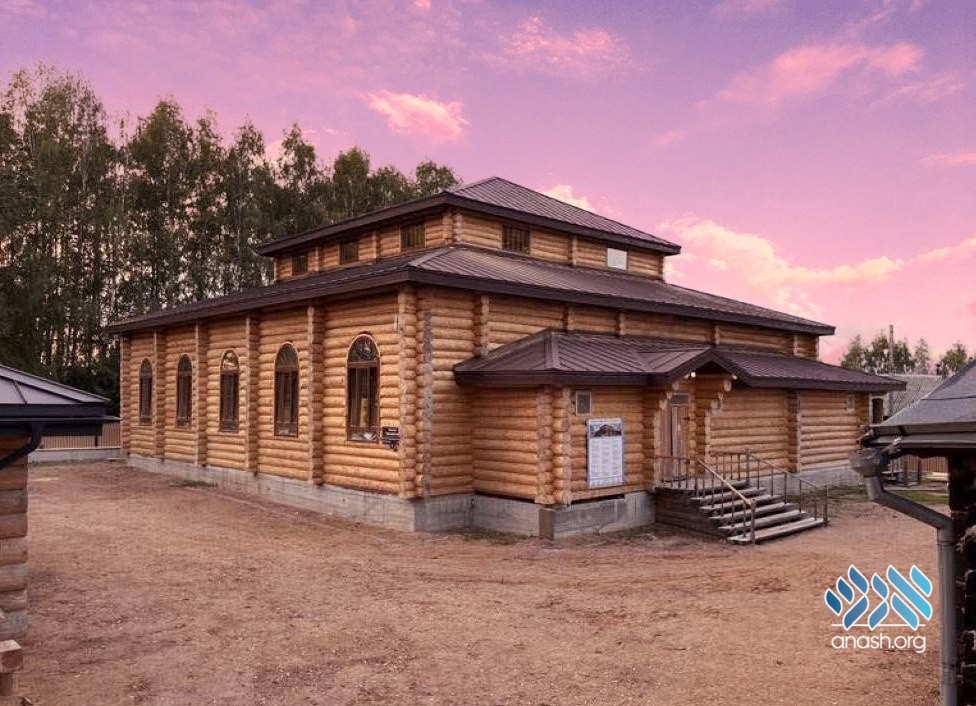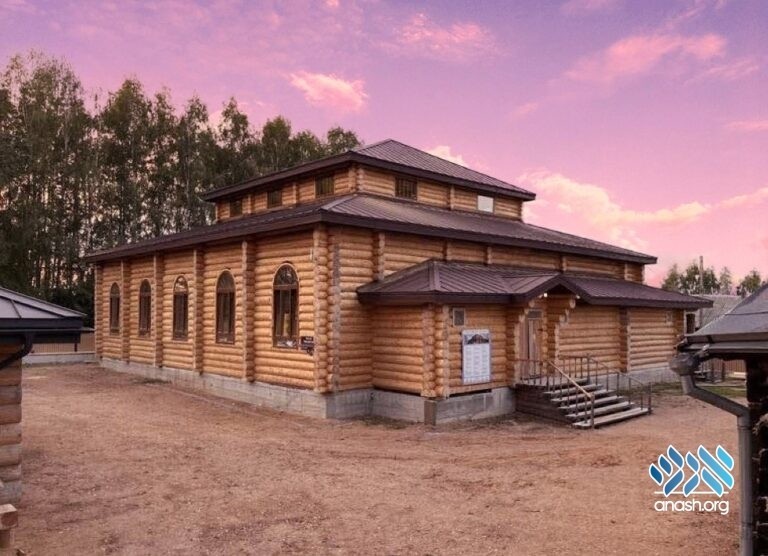ט״ז אלול ה׳תשפ״ד | September 18, 2024
A Shabbos in Lubavitch After the Founding of ‘Tomchei Temimim’
What was it like to spend a Shabbos in Lubavitch after the Rebbe Rashab founded Tomchei Temimim? For generations, Chassidim would journey to Lubavitch to spend a few uplifting days, weeks, or months with the Rebbe. But Tomchei Temimim changed everything.

What was it like to spend a Shabbos in Lubavitch after the Rebbe Rashab founded Tomchei Temimim? For generations, Chassidim would journey to Lubavitch to spend a few uplifting days, weeks, or months with the Rebbe. But Tomchei Temimim changed everything.
Lubavitch. A town rich in history. A town filled with holiness. For more than 102 years, the Rebbeim of Chabad called this town home, and from here Chassidus spread around the world. Chassidim from all over would journey to the town of Lubavitch to spend a few uplifting days, weeks, or months with the Rebbe. In this article, we revisit the incredible experience of Shabbos in Lubavitch after the Rebbe Rashab founded Tomchei Temimim.
Friday Night
The highlight of the week in Lubavitch was the maamar. Every Friday night, before Kabbalas Shabbos, the Rebbe Rashab would say a maamar. The maamar was attended by the temimim, guests, and some of the local residents.
Every Chossid yearned to be present, but there was a seder in Lubavitch. Mashmaas (discipline) and seder were paramount; and while the younger talmidim (and their teachers) would have wished nothing more than to be at the maamar, their seder rarely afforded them the opportunity, as they would be studying from when Shabbos began. Undeterred by this seemingly insurmountable obstacle, some members of the faculty did all they could to be there. The mashgiach, Reb Yechezkel Himmelstein, would sometimes switch duties with another mashgiach, so as to afford himself the opportunity to hear the holy words of the Rebbe with his own ears.
Niggunim and Hachanos
The Rebbe Rayatz would come to shul earlier, wearing a shtreimel and Shabbos clothing. Once everyone found their places, the bochurim would sing niggunim, including Yedid Nefesh. The singing was led by a group of menagnim, headed by Nosson Nota Paharer, who had a beautiful voice, was proficient in music, and sang beautifully. Some of the niggunim sung had been composed by the holy Rebbeim, while others could be traced to legendary Chassidim.
The singing would go on, sometimes for half an hour and sometimes for an hour or more, until the Rebbe would appear. As the Rebbe’s footsteps were heard approaching the room, the niggunim stopped, and everyone turned to face the door.
The Maamar
A hush fell over the crowd, as a wide path opened, and the Rebbe Rashab entered. It felt as if a malach had entered the room. Seeing the Rebbe would leave a deep impression on everyone present. Even a regular person looks different on Shabbos; how much more so the Rebbe. In particular, on Friday night, before saying the maamar, the Rebbe’s face shone with the G-dly light contained within. The Rebbe Rashab was tall, head and shoulders above the crowd. While during the week the Rebbe Rashab wore a silk hat, on Shabbos he wore a shtreimel, as well as a silk coat and a snow-white silk kerchief around his neck.
The Rebbe would walk to the cheder sheini and remove the silk coat and scarf. Then he would slowly walk to his place, between the rows of talmidim standing like soldiers at attention, and would sit down facing the assembled Chassidim.
The Frierdiker Rebbe would stand across the table facing the Rebbe Rashab. The temimim and guests would stand all around, everyone jostling and pushing to catch a glimpse of the Rebbe’s holy face or at least to be in the front row. They would soon be dripping with sweat, “zei’ah shel mitzvah.” For a moment, the Rebbe Rashab would sit silently, exchanging gazes with the Frierdiker Rebbe.
The Rebbe Rashab would begin the maamar in a soft voice, but would steadily grow louder and louder, more and more powerful. Every Chossid in the room, however distant he was standing, could clearly hear the powerful, deep baritone of the Rebbe’s voice. The Rebbe’s face was flaming red.
The Chassidim would stand silently, absorbing every word. The Frierdiker Rebbe would stand as well, occasionally nodding his head attentively. From time to time, in middle of the maamar, the Rebbe Rashab would pause, and the Rebbe Rashab and the Frierdiker Rebbe would look into each other’s eyes. The maamar would generally continue for between an hour and a half to two hours.
The awesome experience would leave a deep impression on young and old, even on those who had never heard Chassidus before. It truly felt like one was standing at the foot of Har Sinai, surrounded by 600,000 fellow Yidden all hearing the word of Hashem.
Upon the conclusion of the maamar, the Rebbe Rashab, soaked with sweat, would go to the cheder sheini to rest for about five minutes, sometimes longer. The Rebbe would then enter the small zal, the minyan would daven Maariv, and then most of the people would go home to their Shabbos seuda.
Chazara
A select few temimim and guests wouldn’t head straight home just yet. Instead, they would gather to chazzer—to review the maamar. Among them were individuals with tremendous capacity for remembering things who would recite the maamar verbatim. The head chozer was Reb Shilem Kuratin, who during the maamar would stand away from the pushing and shoving, with his eyes closed in extreme concentration. While Reb Shilem’s natural abilities may not have been as great as some of the other chozrim, he succeeded in remembering the maamar more precisely than anyone else by way of sheer effort and diligence. He would begin the chazzara, and the other chozrim would assist him.
After much time went by, the entire maamar was pieced together from memory. Only after this was completed did the chozrim daven Maariv and eat seudas Shabbos, long after midnight. After eating, they would gather again to go over the maamar, lest they forget it, and only then would they go to sleep for a short while.
Upon awakening, Reb Shilem and a select five or six of the chozrim would go to the Rebbe’s house for chazzara while the Rebbe would drink tea. The Rebbe would sit, and Reb Shilem would say over the maamar. The Rebbe would clarify and connect any points that were unclear and correct anything that needed correction, occasionally explaining a difficult concept in the maamar. Reb Shilem would then go out and recite the maamar, which he now knew clearly, and would say it over fluently.
Davening
The Rebbe Rashab would enter the small zal at 9:30, davening with the minyan from Ma Tovu until Baruch She’amar. During krias haTorah, the Rebbe sat facing the sefer Torah. After the minyan concluded, the Rebbe would go home and continue davening for three hours or more.
After davening he would make kiddush on wine, and have a bite of mezonos, and then daven Mincha with a small minyan. After Mincha, the Rebbe would eat seudas Shabbos, stating beforehand that this did not take the place of seuda shlishis.
Meanwhile, after davening, the assistant chozrim, such as Reb Moshe the chozer from Zembin, would also say over the maamar, but everyone wanted to hear it from Reb Shilem, whose precision in repeating the Rebbe’s words had no match. After Shabbos, Reb Shilem would test many of the talmidim on the maamar, which they had reviewed over and over throughout Shabbos as an integral part of their seder.
Publishing the Maamar
The Rebbe Rashab would give a manuscript of the maamar in his holy handwriting, to Reb Shmuel “the Writer.” Reb Shmuel would hand-write numerous copies, printing many more, and he would sell them. However, not every maamar was released by the Rebbe Rashab for publication. When the Rebbe Rashab didn’t give out a handwritten manuscript, the head chozrim would usually prepare a transcript on their own.
This was Shabbos in Lubavitch. A day spent listening, studying, reviewing, and again reviewing the maamar. While plentiful seudos were provided for the temimim, they did not linger over their meals, nor did they sleep much; the holiness of Shabbos was palpable in the heartfelt tefillos, soulful niggunim, and the maamar Chassidus—the highlight of the week.


We appreciate your feedback. If you have any additional information to contribute to this article, it will be added below.